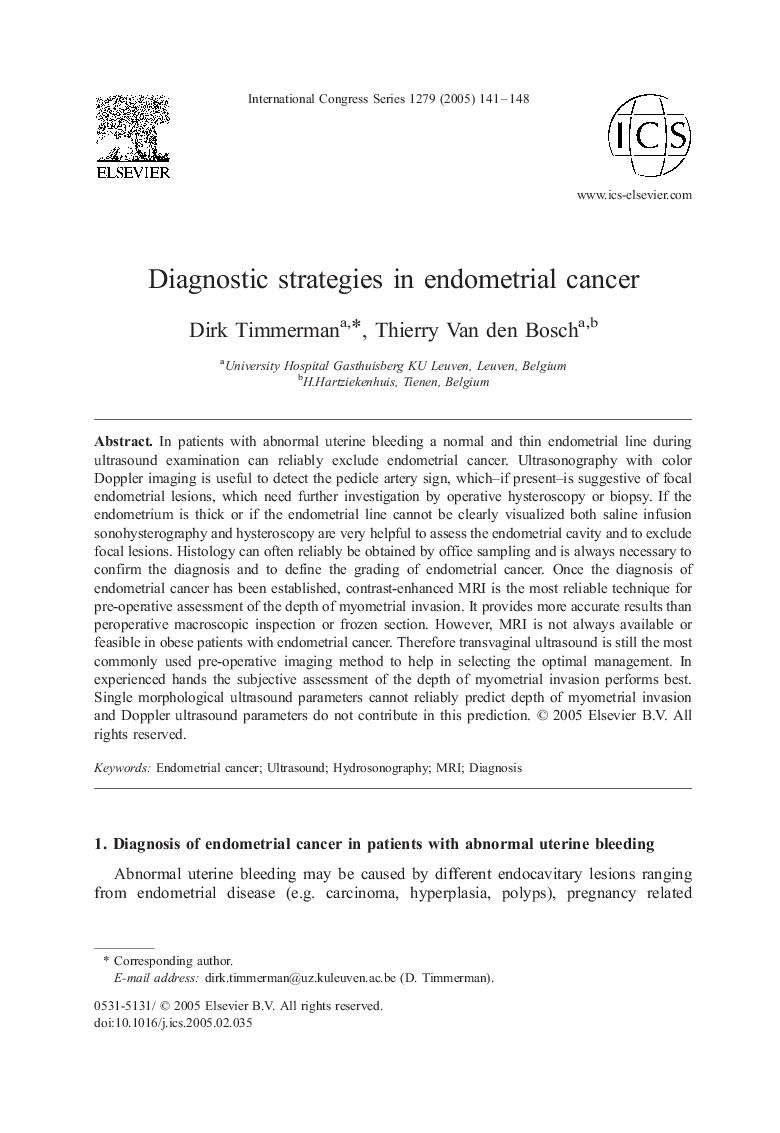| Article ID | Journal | Published Year | Pages | File Type |
|---|---|---|---|---|
| 9021951 | International Congress Series | 2005 | 8 Pages |
Abstract
In patients with abnormal uterine bleeding a normal and thin endometrial line during ultrasound examination can reliably exclude endometrial cancer. Ultrasonography with color Doppler imaging is useful to detect the pedicle artery sign, which-if present-is suggestive of focal endometrial lesions, which need further investigation by operative hysteroscopy or biopsy. If the endometrium is thick or if the endometrial line cannot be clearly visualized both saline infusion sonohysterography and hysteroscopy are very helpful to assess the endometrial cavity and to exclude focal lesions. Histology can often reliably be obtained by office sampling and is always necessary to confirm the diagnosis and to define the grading of endometrial cancer. Once the diagnosis of endometrial cancer has been established, contrast-enhanced MRI is the most reliable technique for pre-operative assessment of the depth of myometrial invasion. It provides more accurate results than peroperative macroscopic inspection or frozen section. However, MRI is not always available or feasible in obese patients with endometrial cancer. Therefore transvaginal ultrasound is still the most commonly used pre-operative imaging method to help in selecting the optimal management. In experienced hands the subjective assessment of the depth of myometrial invasion performs best. Single morphological ultrasound parameters cannot reliably predict depth of myometrial invasion and Doppler ultrasound parameters do not contribute in this prediction.
Related Topics
Life Sciences
Biochemistry, Genetics and Molecular Biology
Molecular Biology
Authors
Dirk Timmerman, Thierry Van den Bosch,
